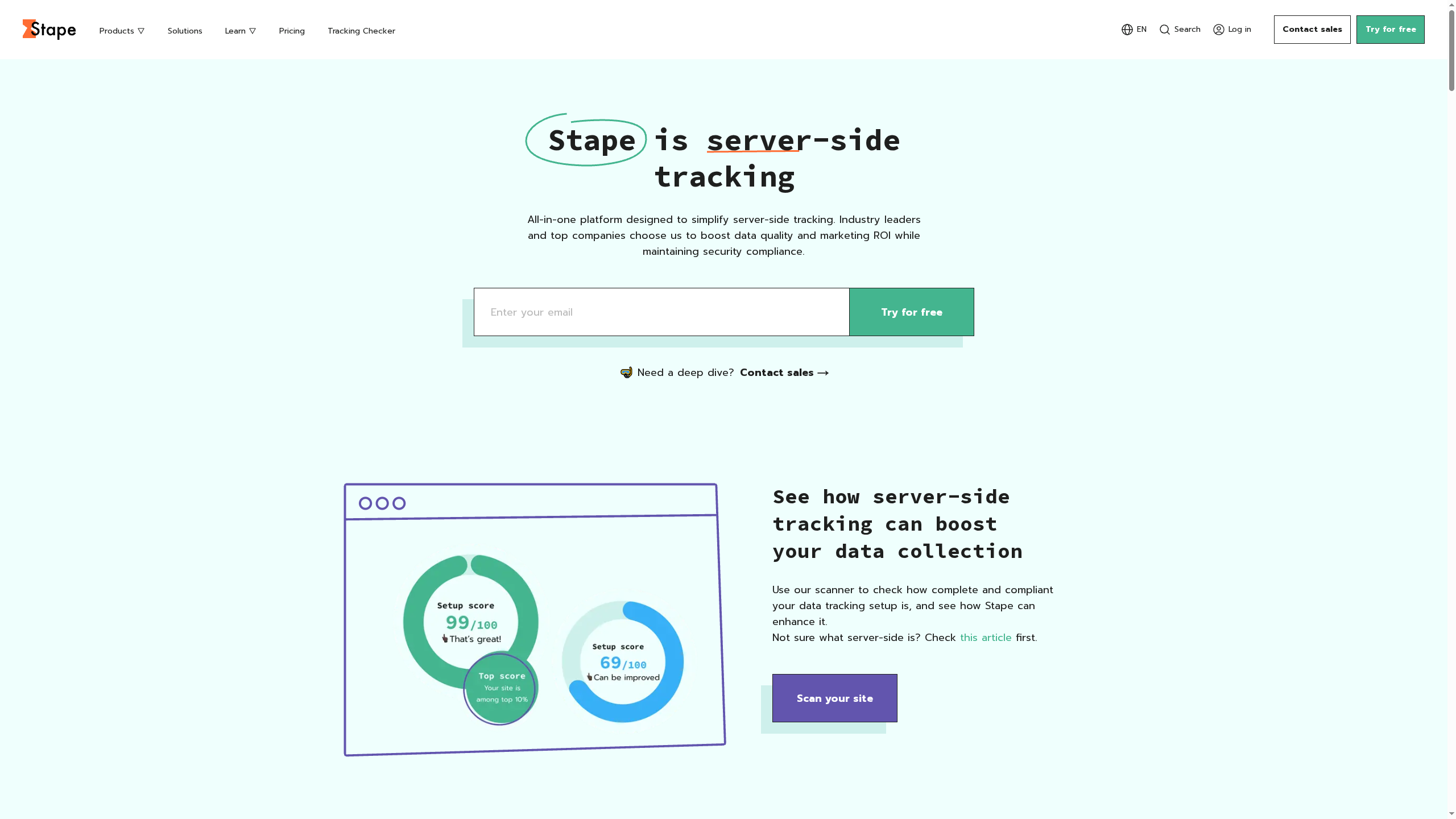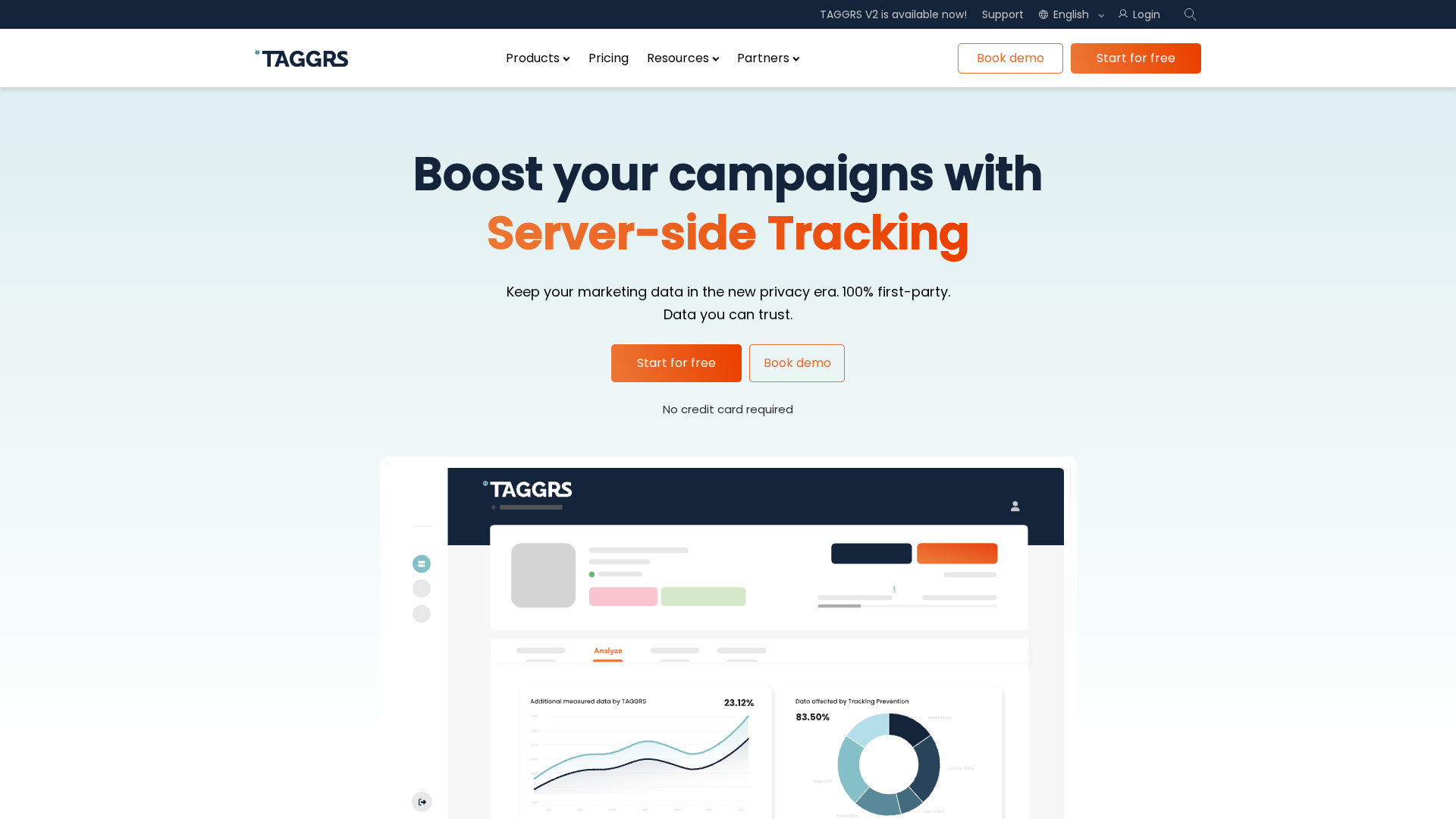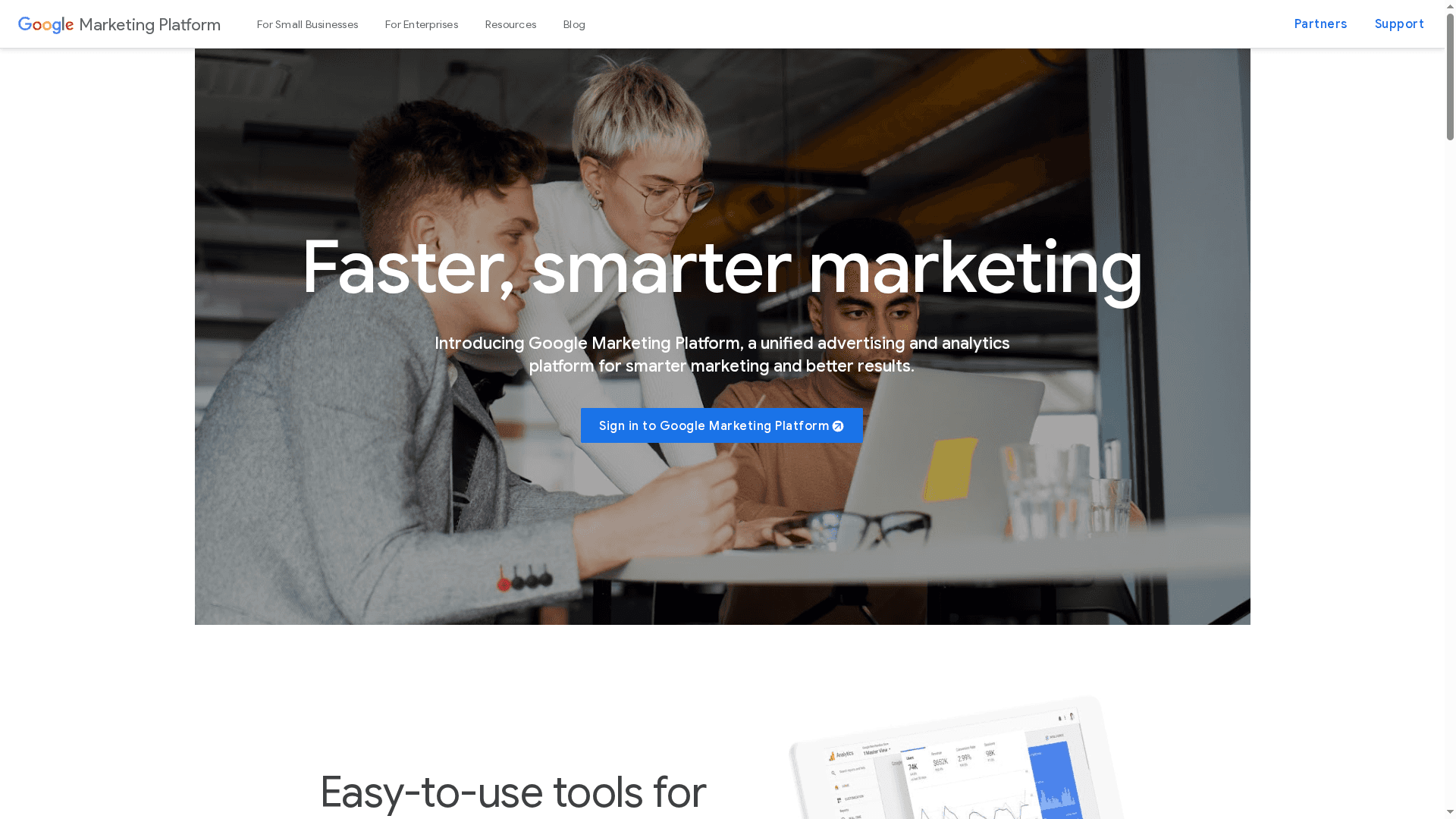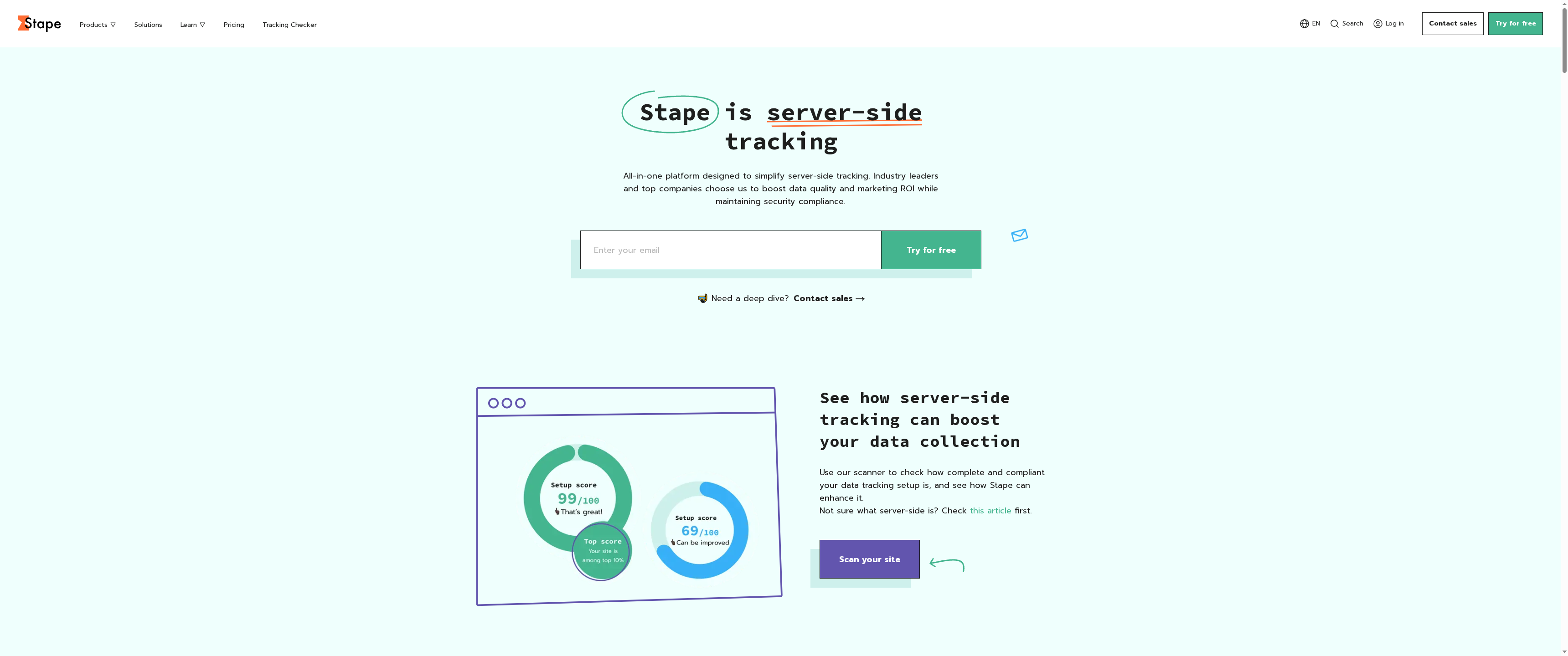Tracking online conversions can feel like chasing shadows. Scripts break when sites update and privacy rules keep changing the rules of the game. Every missed purchase means less clarity and lost ad spend. Now there are new tools built to catch what slips through the cracks. They promise cleaner data, faster setup and stronger privacy for teams who refuse to rely on luck. Wondering how some businesses keep every sale in sight while others get left guessing? The answers might surprise you.
Table of Contents
adpage.io

At a Glance
Adpage.io is a purpose-built server-side tagging platform for e-commerce agencies and in-house marketing teams that need rock-solid conversion measurement. Its core strength is eliminating common data loss by using webhook-driven, server-side collection and a done-for-you setup service that gets clients live quickly. If you care about measuring every conversion and reducing manual firefighting, Adpage.io is purposefully designed for that mission.
Core Features
Adpage.io implements server-side tagging to ensure tracking accuracy without relying solely on client-side scripts. The platform offers a done-for-you setup service and technical assistance, real-time alerts and 24/7 monitoring for tracking script changes, and webhooks that capture 100% of conversions — including events from users who never reach a traditional thank-you page. Integrations cover Shopify, Magento, WooCommerce, WordPress and Lightspeed C-series, and the platform supports datalayer implementations for other systems. In short: it combines implementation, detection, and resilient data capture.
Pros
- Turnkey setup accelerates launches: The fully automated setup service means agencies can avoid lengthy technical onboarding and start measuring reliably within days.
- Reliable, webhook-based conversion capture: Webhook implementations ensure conversion events are recorded even when client-side flows fail or users abandon the thank-you page.
- Proactive monitoring and alerts: Real-time alerts and 24/7 monitoring reduce blind spots and let you fix tracking regressions before they skew reports.
- Strong e-commerce integrations: Native links with major platforms like Shopify, Magento and WooCommerce simplify deployment across multiple clients.
- Privacy and compliance focus: The platform is presented as privacy compliant and designed to align with regulatory requirements, which helps protect client data and simplify audits.
Who It’s For
Adpage.io is built for e-commerce professionals: agencies managing multiple clients, internal marketing teams who demand consistent measurement, and freelance Google Tag Manager specialists who need a reliable backend for cross-client tagging. If you run paid acquisition and report revenue to stakeholders, Adpage.io gives you control and confidence in the numbers you present.
Unique Value Proposition
Adpage.io stands out because it treats conversion tracking as a server-side system problem rather than a front-end convenience. The combination of webhook-powered 100% conversion capture, continuous monitoring, and a done-for-you implementation service makes it uniquely suited to agencies that need predictable, auditable data across many stores. Where client-side tracking can miss purchases or break with theme updates, Adpage.io centralises event collection and surfaces issues immediately. That design reduces time spent troubleshooting, decreases lost ad spend due to misattributed conversions, and streamlines reporting — a direct competitive advantage for performance-driven teams.
Real World Use Case
An agency deploys Adpage.io across a portfolio of Shopify and Magento stores. When a client changes a checkout script, Adpage.io’s monitoring triggers an alert, the team diagnoses the issue without revenue loss, and webhook events continue to feed accurate conversion counts into reporting dashboards — all while the agency avoids manual fixes on each store.
Pricing
Quote-based
Website: https://adpage.io
Stape

At a Glance
Stape is an all‑in‑one server‑side tagging platform that prioritises data quality, privacy and straightforward deployment. It simplifies hosting Server‑Side Google Tag Manager and provides gateways for Meta, TikTok and Snapchat, plus other data connectors—so you can reduce client data loss and improve attribution. Support and security are emphasised, with autoscaling and anonymisation tools that suit agencies handling sensitive datasets. Bottom line: sensible pricing and strong privacy features make Stape a practical choice if you want reliable server‑side tracking without reinventing the wheel.
Core Features
Stape bundles Server‑Side Google Tag Manager hosting with a Signals Gateway for multi‑platform data connection, and a Meta Conversions API Gateway to feed ad platforms server‑side. It supports first‑party data collection with minimal or no coding, plus server‑side Google Analytics and Google Ads integration. The platform also offers TikTok Events API and Snapchat Conversions API gateways, cookieless tracking options, GDPR‑focused anonymisers, event enrichment (geo headers, user‑agent enhancements) and automatic resource autoscaling during traffic spikes.
Pros
- Simplifies server‑side tracking setup: Stape reduces the operational friction of running a server‑side GTM container so teams deploy faster and manage fewer moving parts.
- Supports multiple data sources and platforms: The built‑in gateways for Meta, TikTok, Snapchat, GA and Google Ads mean you can standardise event delivery across channels.
- Enhances data security and privacy compliance: With anonymisers and cookieless options, Stape helps you align tracking with GDPR and privacy best practices.
- Offers a range of integrations and plugins: Event enrichment and connector plugins let you augment events with geo and user agent data before forwarding to marketing endpoints.
- Provides technical support and community: Human support and community resources are available for onboarding and troubleshooting, which speeds up real deployments.
Cons
- Pricing details are limited to starting plans; high‑traffic custom solutions may be more expensive: The published entry price is clear, but you may need a bespoke quote as traffic grows.
- Requires some level of technical understanding for advanced setup: While basic flows are easy, advanced enrichment or custom gateways still demand technical skills.
- Potentially complex features might require learning: Features like autoscaling, cookieless setups and API gateways add power but also a learning curve for teams new to server‑side tagging.
Who It’s For
Stape is aimed at digital marketers, data analysts and developers who need simplified, secure server‑side tracking for websites and marketing campaigns. It suits agencies and brands that want to improve attribution accuracy, bypass common client‑side blockers and meet privacy obligations without building an in‑house tagging stack.
Unique Value Proposition
Stape’s core value is packaging robust server‑side tracking with privacy and support: a managed hosting layer for GTM plus platform‑specific API gateways and enrichment tools—all at competitive entry pricing. You get autoscaling, data anonymisation and human support in one service, reducing operational risk and speeding time to insight.
Real World Use Case
A digital marketing team deploys Stape’s server‑side GTM hosting to improve data accuracy, bypass ad‑blockers and enhance privacy compliance; the result is more reliable campaign attribution and measurable uplift in marketing ROI.
Pricing
Starting at Free (GTM) or $20/month for hosting; custom solutions available for high‑traffic websites.
Website: https://stape.io
taggrs

At a Glance
Taggrs is a practical, privacy-first server-side tracking platform aimed at marketing teams and agencies that need reliable conversion data without depending on major cloud providers. It offers rapid setup via templates, GDPR-focused controls and multi-domain support — all at a markedly lower infrastructure cost than Google Cloud. If you want faster, more accurate tracking with budget-friendly hosting, taggrs is worth testing.
Core Features
Taggrs bundles server-side tracking templates for quick implementation and an automatic connection with Google Tag Manager, making migration from client-side setups more straightforward. It includes GDPR compliance tools and strong data-control features, supports multi-domain configurations, and runs on independently managed servers rather than Google Cloud — a model the vendor says is around 5x cheaper than Google Cloud. The platform is explicitly positioned to work with Google Analytics 4 and common ad platforms, helping preserve attribution and conversion signals in a privacy-conscious landscape.
Pros
- Easy to set up with pre-made templates that cut implementation time and reduce the need for repeated developer involvement.
- Cost-effective pricing options, including a free tier, make it accessible to small teams and agencies testing server-side tracking.
- Good data security and privacy controls are provided by independently managed servers that reduce reliance on third-party cloud providers.
- Strong support and documentation help teams troubleshoot and accelerate onboarding.
- Compatibility with major analytics and advertising platforms ensures the server-side layer integrates with existing martech stacks.
Cons
- Pricing varies based on request limits and plan features, which may be complex for organisations trying to predict monthly costs.
- Additional custom solutions require contacting sales for tailored plans, adding friction for teams that need bespoke integrations quickly.
- Some features might require technical knowledge for optimal use, so non-technical marketers could face a learning curve.
Who It’s For
Taggrs targets digital marketers, analytics professionals, and agencies that need dependable, privacy-compliant server-side tracking without the high infrastructure bill. It suits teams migrating from client-side tracking, businesses running multiple domains, and anyone who wants more control over data flows and consent handling — provided they can allocate a bit of technical resource for setup.
Unique Value Proposition
Taggrs promises a pragmatic middle path: server-side tracking that preserves measurement accuracy while lowering hosting costs through independently managed infrastructure. The emphasis on templates and GTM automation reduces implementation overhead, and the platform’s GDPR tools make it easier to respect consent without sacrificing conversion visibility.
Real World Use Case
A marketing team migrated Google Ads conversion tracking from client-side scripts to taggrs’ server-side templates. With a quick template-led deployment and GTM integration, they recovered lost conversion signals and increased usable conversion data by 25%, improving bidding decisions and return on ad spend.
Pricing
Starting at €22/month; free tier available (10,000 requests) and discounted annual plans are offered, with custom enterprise pricing for high-volume needs.
Website: https://taggrs.io
Google Marketing Platform

At a Glance
Google Marketing Platform is a unified suite that brings advertising, analytics and tag management together for marketers who need an enterprise-grade, data-driven approach. It excels at giving real-time audience insights and campaign reporting while supporting both small teams and large organisations. The platform can be powerful and comprehensive, but that breadth brings complexity — expect a learning curve for full utilisation. Overall: robust capability, requires commitment.
Core Features
Google Marketing Platform combines unified advertising and analytics tools with tag management that aims to reduce the need for coding. Key capabilities include audience insights and real-time performance data, end-to-end campaign management and reporting through Campaign Manager 360, programmatic ad reach via Display & Video 360, and search campaign handling with Search Ads 360. Integration with Google Cloud and partner ecosystems extends data handling and attribution possibilities, enabling a consolidated view of marketing activity across channels.
Pros
- Comprehensive toolset in one place: The platform consolidates analytics, campaign management and tag control so you can reduce tool sprawl and view cross-channel performance holistically.
- Scales from small businesses to enterprises: Flexible enough to serve single-brand teams and large multi-channel advertisers with enterprise needs.
- Real-time insights for fast optimisation: Analysts and campaign managers can act on fresh data to adjust bids, creatives or audience targeting without long delays.
- Strong integrations with Google Cloud and partners: These integrations enable deeper data pipelines and more sophisticated measurement strategies than isolated tools typically allow.
Cons
- Complexity for new users due to the extensive features: The breadth of modules and options can overwhelm teams without dedicated resources or prior experience.
- Potential cost for advanced enterprise solutions: Many enterprise-grade features and integrations are tied to higher-tier arrangements and may require budget increases.
- Learning curve associated with utilising all the tools effectively: Getting consistent, accurate measurement across products demands time, training and often cross-functional coordination.
Who It’s For
This platform suits marketers, advertising teams and analytics professionals who need an integrated ecosystem for digital campaigns and measurement — from small business owners willing to scale up, to enterprise teams requiring advanced reporting and programmatic buying. If you run multi-channel campaigns and value consolidated reporting, this is a natural fit.
Unique Value Proposition
Google Marketing Platform’s unique value is its integration: advertising and analytics are engineered to work together, reducing friction between campaign activity and measurement. That integration, coupled with Google Cloud connectivity, enables enriched audience insights and faster optimisation cycles than piecemeal stacks.
Real World Use Case
A retail brand uses the platform to combine web analytics, campaign delivery and programmatic buying: they monitor real-time audience segments, adjust creatives via Display & Video 360, and reconcile conversions across channels in Campaign Manager 360 to reduce wasted spend and improve ROAS. The result: faster decision-making and clearer attribution.
Pricing
Quote-based: pricing details are not specified and are generally available upon contact or consultation with Google.
Website: https://marketingplatform.google.com
Stape

At a Glance
Stape is an all-in-one server-side tracking platform focused on improving data quality, security and marketing ROI. It simplifies the often-complex move from client-side to server-side tagging by offering ready-made infrastructure and integrations, while keeping compliance and scalability front of mind. If you need to reduce data loss from ad blockers and third-party cookie restrictions, Stape is a practical, engineering-light route to cleaner analytics. It isn’t entirely plug-and-play for every team; some technical setup still helps.
Core Features
Stape provides server-side tagging setup tailored for Google Tag Manager alongside a Signals gateway that connects first-party data to your marketing stack. It supports Meta Conversions API and offers TikTok and Snapchat events API gateway integrations with trial options. Operational features include automatic resource scaling for traffic spikes, built-in monitoring and debugging tools, and custom enterprise options such as private clusters, bespoke contracts and compliance configurations.
Pros
- Simplifies server-side tracking setup so marketing teams can migrate away from fragile client-side scripts with fewer engineering cycles.
- Enhances data quality and security by centralising first-party collection and reducing reliance on third-party cookies.
- Supports multiple major platforms with dedicated integration gateways, making cross-channel attribution more reliable.
- Offers automated scaling that protects data collection integrity during traffic spikes and campaign surges.
- Provides comprehensive customer support and documentation which reduces time-to-value for teams new to server-side tagging.
Cons
- Some features may require technical understanding for initial setup, which means smaller teams without developer resources might need external help.
- Pricing details are limited and may vary for enterprise solutions, so budgeting for high-traffic deployments can be unclear until you request a quote.
- Reliance on cloud infrastructure might pose data privacy considerations for organisations with strict on-prem or regional residency mandates.
Who It’s For
Stape is best for marketing teams, e-commerce agencies and businesses that want to improve measurement accuracy and move toward first-party data strategies. It suits organisations that value security and scalability—particularly those running ad campaigns across Meta, TikTok and Snapchat or those battling ad blockers and cookie attrition. If you have some technical support or agency partnership, you’ll unlock Stape’s benefits faster.
Unique Value Proposition
Stape’s strength lies in packaging server-side infrastructure, platform-specific API gateways and monitoring tools into a single, managed offering. Instead of building and maintaining private servers and connectors, you get a focused platform that reduces integration friction and scales automatically—so you collect conversions more reliably and maintain compliance with minimal ongoing maintenance.
Real World Use Case
A client used Stape to migrate conversion tracking to server-side for their ad campaigns, bypassing ad blockers and consolidating first-party signals across channels. The result was cleaner attribution for paid campaigns, fewer lost conversions and improved campaign optimisation—delivering better return on ad spend and easier compliance with privacy requirements.
Pricing
Freemium plan available for basic use; starting at $20/month for hosting, with custom solutions for high-traffic websites.
Website: https://stape.io
Conversion Tracking Tools Comparison
This table provides a comprehensive comparison of server-side conversion tracking tools, highlighting their features, pros, cons, target users, and pricing details.
| Tool | Key Features | Pros | Cons | Pricing |
|---|---|---|---|---|
| Adpage.io | Webhook-driven collection, server-side tagging, 24/7 monitoring, supports Shopify & Magento | Turnkey setup, reliable conversion capture, strong e-commerce integrations, privacy-focused | Quote-based pricing | Quote-based |
| Stape | Server-Side Google Tag Manager hosting, Meta & TikTok integration, GDPR compliance, cookieless options | Simplifies server-side setup, strong data security, multi-platform support, technical support available | Basic plan starts free with paid plans needed for advanced use, requires some technical skill | Starting at $20/month |
| Taggrs | Privacy-first server-side templates, multi-domain support, GDPR compliance, independent server hosting | Easy setup with templates, cost-effective, strong data security and privacy controls | Pricing varies on requests, requires contacting sales for custom plans | Starting at €22/month |
| Google Marketing Platform | Unified advertising and analytics, real-time insights, broad integrations, end-to-end campaign management | Comprehensive toolset, scalable for all business sizes, real-time data for fast optimisation | Complex for new users, potential cost increase for enterprise solutions | Quote-based |
Achieve Flawless Conversion Tracking with AdPage Today
The “Best Server-Side Tagging Platforms – Expert Comparison 2025” article highlights a critical challenge many e-commerce marketers face: incomplete conversion data caused by client-side tracking failures and data loss. If your goal is to gain accurate, comprehensive measurement of every conversion event, especially when users bypass traditional thank-you pages, you are not alone. Webhook-driven server-side tagging is the proven solution to this problem, reducing the need for constant manual troubleshooting and ensuring your data is privacy compliant.
At AdPage, we understand these pain points deeply. Our platform offers a hands-on onboarding service that guarantees you start capturing 100 percent of your conversions swiftly. Compatible with popular platforms like Shopify, WooCommerce and Magento, AdPage gives you peace of mind with GDPR-aligned consent management and real-time monitoring so you can stop losing conversions to unseen tracking gaps.
Ready to eliminate tracking blind spots once and for all and power your data-driven marketing?
[Image:cta_image]
Explore how AdPage can transform your conversion tracking setup right now. Visit AdPage to learn more and take control of your marketing data with confidence.
Frequently Asked Questions
What is server-side tagging and why is it important?
Server-side tagging refers to the process of managing tracking scripts and data collection on the server side, which improves accuracy and reduces data loss. To implement server-side tagging, consider using platforms that specialize in this technology to ensure reliable conversion measurement.
How can server-side tagging platforms improve data privacy?
Server-side tagging platforms enhance data privacy by limiting reliance on third-party cookies and allowing for more secure first-party data collection. Focus on using platforms that offer built-in privacy compliance tools to better align with regulations like GDPR.
What should I consider when comparing server-side tagging platforms for my agency?
When comparing server-side tagging platforms, assess features such as ease of setup, integration capabilities, and real-time monitoring options. Create a checklist that includes these factors to make an informed decision based on your agency’s specific needs.
How quickly can I expect to see results after implementing a server-side tagging solution?
You can typically start seeing results from a new server-side tagging implementation within 30–60 days, depending on the complexity of your setup. Begin by closely monitoring your conversion data to identify improvements in tracking accuracy and reporting reliability.
What are the common challenges when transitioning to server-side tagging?
Common challenges include the potential need for technical expertise and the complexity of migrating existing tracking systems. Prepare for this transition by allocating resources for technical support and training to ensure a smooth implementation process.
Can I use server-side tagging with multiple e-commerce platforms?
Yes, many server-side tagging platforms support multiple e-commerce platforms like Shopify, Magento, and WooCommerce. Evaluate the specific integrations offered by each platform to ensure compatibility with your existing systems.



.png)
